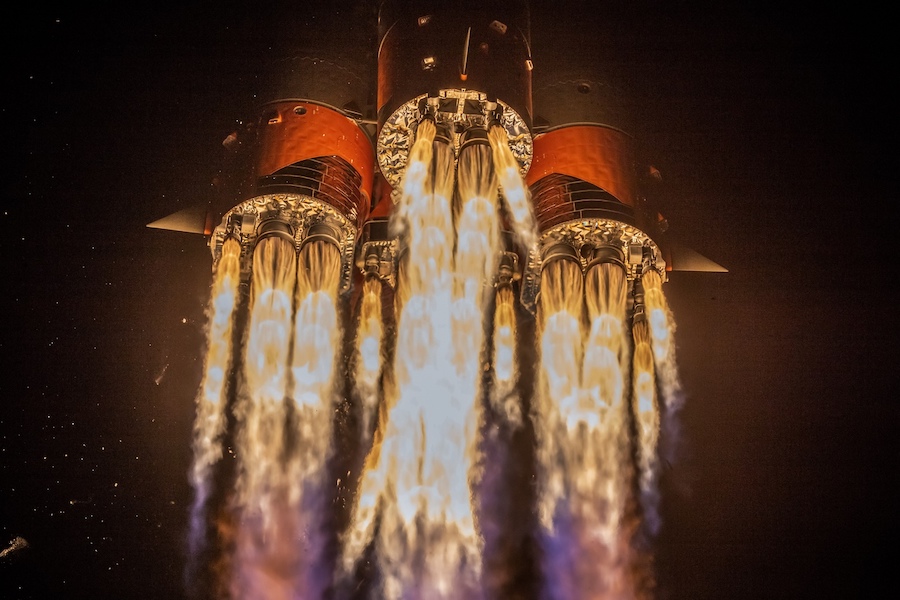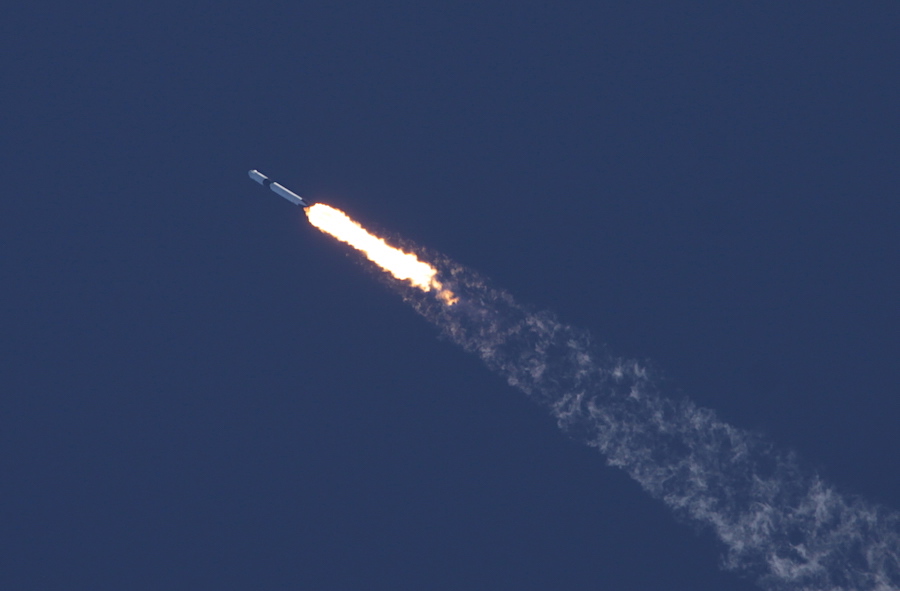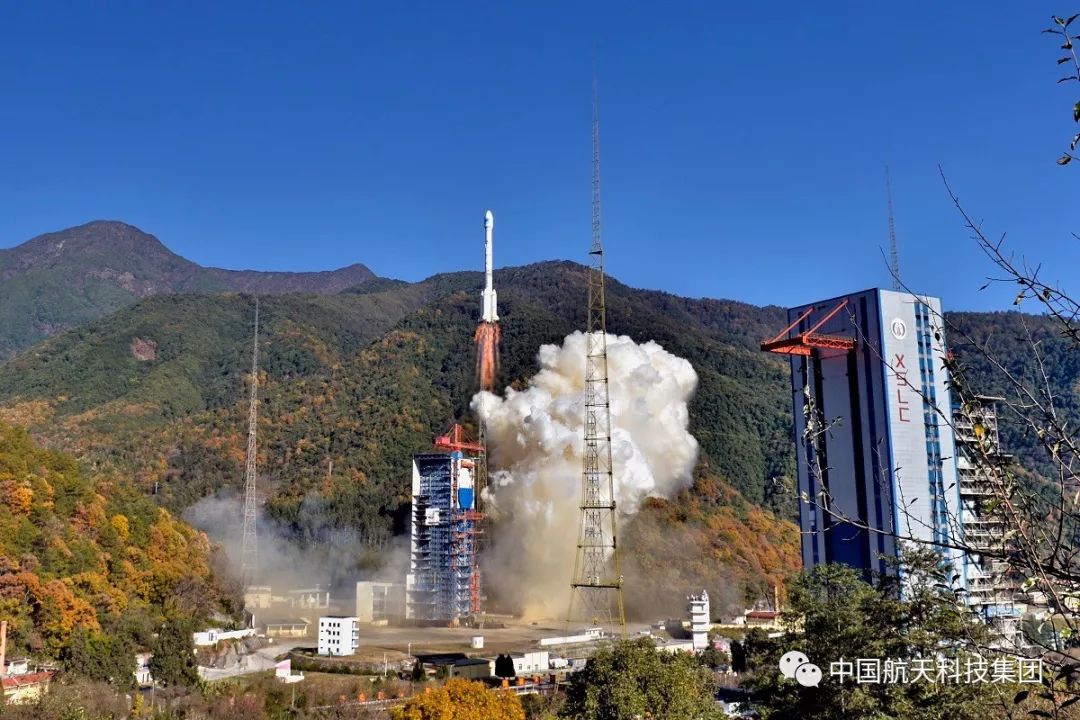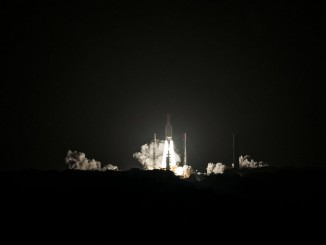
China led the world with 34 orbital launch attempts in 2019 — including two failures — followed by 22 flights from Russian-operated launch pads and 21 satellite delivery missions originating from U.S. spaceports, all of which were successful.
There were 102 orbital launch attempts worldwide in 2019, 97 of which reached orbit. That’s down from 114 orbital launch attempts in 2018, of which 112 achieved orbit, but 2019’s final launch tally was above the annual average from the last five years.
The number of U.S. and Chinese launches was down in 2019 compared with 2018, but Russian rockets flew more often last year than the year before.
The top-level numbers 2019’s launch record tell only part of the story.
Perhaps the biggest highlight of China’s year in launches came in December with the successful return-to-flight of the country’s Long March 5 launcher — China’s biggest rocket — after a grounding the lasted two-and-a-half years in the wake of a 2017 failure.
Russia launched three crewed missions to the International Space Station, the only flights by humans to orbit last year. Russian rockets conducted 22 orbital launches from the Baikonur, Plesetsk and Vostochny spaceports operated by Russia’s space program, and an additional three launches by Russian-made Soyuz boosters took off from the European-run Guiana Space Center in South America under the management of the French launch services provider Arianespace.
SpaceX accounted for 13 of the 21 U.S.-based launches in 2019, including two missions by the company’s Falcon Heavy vehicle, the most powerful rocket in the world currently in service. United Launch Alliance performed five missions with Atlas 5 and Delta 4 rockets, and Northrop Grumman conducted three orbital launches in 2019.
The figure of U.S.-based launches does not include six flights by Rocket Lab’s Electron small satellite booster, which is partially built in the United States but launches from a spaceport in New Zealand. Rocket Lab is also headquartered in the United States, with final assembly and launch operations primarily centered in New Zealand.
Nine launches by Arianespace departed from the Guiana Space Center last year, including one failed mission by the light-class European-built Vega launcher. Arianespace logged four successful Ariane 5 heavy-lift flights, two Vega missions — one success and one failure — and the three flights by medium-class Russian Soyuz rockets from French Guiana.
There were six Indian launches in 2019, and two from Japan. All were successful.
Two Iranian satellite launch attempts ended in failure.

Three missions launched in 2019 targeted destinations beyond Earth orbit.
The privately-funded Israeli Beresheet probe attempted to land on the moon in April — following a launch from Cape Canaveral on a SpaceX booster in February — but faltered before touchdown.
The joint Russian-German X-ray observatory Spektr-RG launched in July and reached an observing post at the L2 Lagrange point nearly a million miles (1.5 million kilometers) from Earth in October to begin its scientific observations.
And India’s Chandrayaan 2 lunar mission launched in July, but the spacecraft’s landing module crashed on the moon. Chandrayaan 2’s orbiter segment successfully reached its observing position circling the moon and began its scientific survey mission.
Fourteen launches in 2019 delivered cargo or crew members to the International Space Station.
Here is a final tally of the orbital launches in 2019, with numbers in parentheses representing failed missions:
- China: 34 (2)
- Russia: 22 (0)
- United States: 21 (0)
- Europe: 9 (1)
- India: 6 (0)
- New Zealand: 6 (0)
- Japan: 2 (0)
- Iran: 2 (2)
U.S. satellite operators led the world in 2019 with 304 payloads launched into orbit, according to a tally by Jonathan McDowell, a astrophysicist and a respected tracker of global space activity. China was next with 73 payloads, followed by European operators with 64 payloads, and Russia with 30.
Read McDowell’s end-of-the-year report on launch activity in 2019.
Mirroring the number of launches by nation, China’s family of Long March 2, 3 and 4 rockets were the most-flown satellite boosters last year, with 21 total missions, including a single failure. The Long March 2, 3 and 4 rockets are rooted in Cold War-era Chinese liquid-fueled missile technology, and all use the same basic hydrazine-fueled YF-21 and YD-24 engines.
Several variants of Russia’s Soyuz rocket family flew 18 times in 2019 — all successfully — and SpaceX’s Falcon 9 and Falcon Heavy rockets launched 13 missions last year, ranking second and third worldwide, according to a tabulation by Spaceflight Now.
Here’s a ranking of the most-flown orbital-class launchers in 2019, with numbers in parentheses representing failed missions:
- Chinese Long March 2, 3 and 4: 21 (1)
- Russian Soyuz: 18 (0)
- U.S. Falcon 9 & Falcon Heavy: 13 (0)
- U.S./New Zealand Electron: 6 (0)
- Russian Proton: 5 (0)
- Indian PSLV: 5 (0)
- Chinese Kuaizhou 1A: 5 (0)
- European Ariane 5: 4 (0)
- Chinese Long March 11: 3 (0)
- U.S. Delta 4 & Delta 4-Heavy: 3 (0)
- European Vega: 2 (1)
- Russian Rockot: 2 (0)
- U.S. Antares: 2 (0)
- U.S. Atlas 5: 2 (0)
- Chinese Long March 5: 1 (0)
- Chinese Long March 6: 1 (0)
- Chinese Hyberola 1: 1 (0)
- Chinese Jielong 1: 1 (0)
- Chinese OS-M1: 1 (1)
- Indian GSLV Mk.3: 1 (0)
- Iranian Safir 1B: 1 (1)
- Iranian Simorgh: 1 (1)
- Japanese Epsilon: 1 (0)
- Japanese H-2A/B: 1 (0)
- U.S. Pegasus XL: 1 (0)

The spaceport at Cape Canaveral Air Force Station and NASA’s neighboring Kennedy Space Center in Florida was the starting point for 16 orbital-class missions in 2019, more than any other location. Launch pads at the Baikonur Cosmodrome in Kazakhstan and the Xichang launch base in China each accommodated 13 orbital launches last year.
The most-used fixed launch pad in the world was Cape Canaveral’s Complex 40 facility, which saw eight Falcon 9 launches in 2019.
Here’s a tabulation by Spaceflight Now of last year’s orbital-class launches by spaceport, with numbers in parentheses representing failed missions:
- Cape Canaveral & Kennedy Space Center, Florida: 16 (0)
- Baikonur Cosmodrome, Kazakhstan: 13 (0)
- Xichang, China: 13 (0)
- Taiyuan, China: 10 (1)
- Guiana Space Center, French Guiana: 9 (1)
- Jiuquan, China: 9 (1)
- Plesetsk Cosmodrome, Russia: 8 (0)
- Satish Dhawan Space Center, India: 6 (0)
- Mahia Peninsula, New Zealand: 6 (0)
- Vandenberg Air Force Base, California: 3 (0)
- Mid-Atlantic Regional Spaceport, Virginia: 2 (0)
- Imam Khomeini Spaceport, Iran: 2 (2)
- Wenchang, China: 1 (0)
- Yellow Sea, China: 1 (0)
- Tanegashima Space Center, Japan: 1 (0)
- Uchinoura Space Center, Japan: 1 (0)
- Vostochny Cosmodrome, Russia: 1 (0)
Email the author.
Follow Stephen Clark on Twitter: @StephenClark1.



